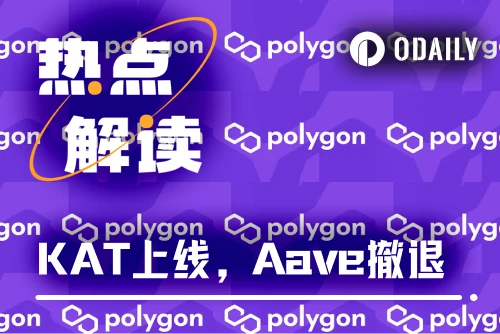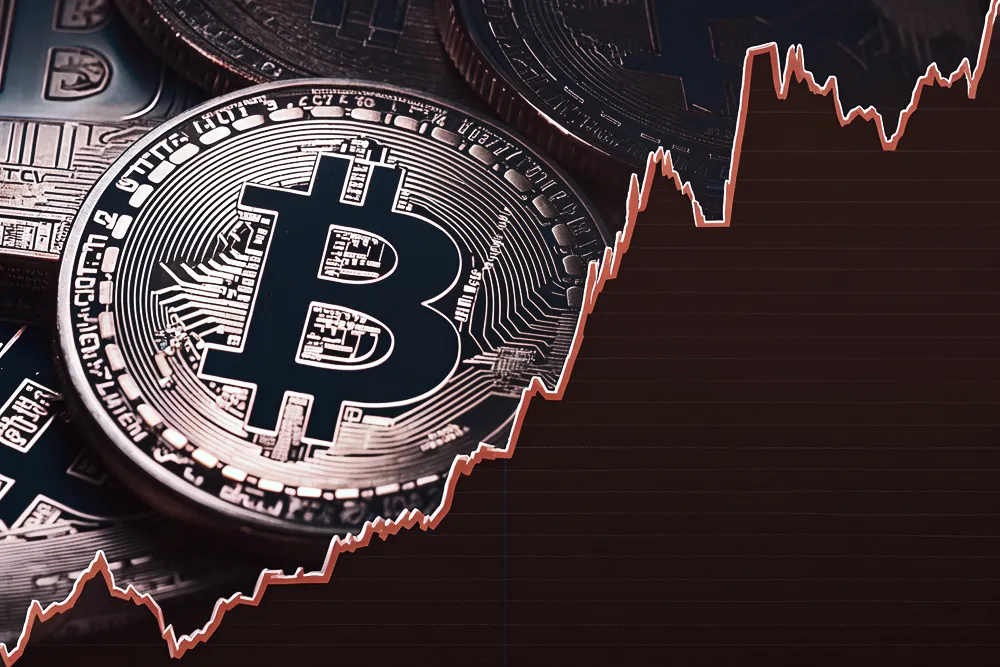Original | Odaily Planet Daily (@OdailyChina)

Yesterday, Marc Zeller, a core member of the Aave community, posted on X stating that when an ecosystem derives a second token, the total market capitalization of both will ultimately be lower than that of the original token. For example, the new coin KAT launched by Katana Network after POL from Polygon is expected to have a combined market capitalization lower than that of POL at the time the Katana plan was announced. This post triggered strong dissatisfaction from Polygon Labs CEO Marc Boiron, leading to a $50,000 bet on the market performance of POL and KAT six months later.
This is not only a bet on market performance but also a challenge to Polygon's multi-token strategy, ecological governance philosophy, and even the future direction of DeFi.
Background and Strategic Intent of Polygon's New Coin KAT
Katana Network is the latest strategic project in the Polygon ecosystem, initiated by the Katana Foundation and co-incubated by Polygon Labs and GSR Markets. The network is positioned as a private blockchain focused on optimizing DeFi scenarios, with plans to launch a public mainnet in June 2025, emphasizing deeper liquidity integration and more predictable lending rates, aiming to build a more stable and efficient DeFi lending environment.
Alongside Katana, its native token KAT was also introduced. The functions of KAT cover two core modules: ecological governance and liquidity incentives. Among these, 15% of KAT tokens will be distributed to POL stakers on Ethereum in the form of airdrops, attempting to link the old and new ecosystems through the existing user base, thereby enhancing community stickiness and stabilizing market confidence in Polygon's core assets.
The issuance of KAT is an important part of Polygon's strategic restructuring. In June of this year, Polygon founder Sandeep Nailwal announced that he would personally serve as the CEO of the foundation, marking a comprehensive takeover of ecological strategy. He emphasized that Polygon would gradually abandon zkEVM and focus resources on two directions: the first is Polygon PoS, which focuses on stablecoin payments and RWA asset integration; the second is AggLayer, aimed at providing incubation, funding, and resource support for project development within its PoS ecosystem. Successful projects will airdrop 5% to 15% of their total native token supply to POL stakers and connect to the Agglayer network. This means that Polygon will return to a path of sustainable growth rather than relying solely on technological stacking.
Katana and KAT were launched against this backdrop, aiming to supplement the increasingly thin DeFi pillar in the Polygon PoS ecosystem, especially after heavyweight protocols like Aave and Lido withdrew, resulting in a loss of over $300 million in TVL. The launch of KAT has become an important measure for Polygon to revitalize its ecosystem. Through new coin issuance, airdrop incentives, and dedicated infrastructure construction, Polygon hopes to reactivate TVL growth momentum and attract developers and users back to the ecosystem.
From a broader perspective, Polygon's move is also a response to the competition in the Layer 2 ecosystem. Under the dominance of modular solutions like OP Stack and Arbitrum Orbit, Polygon attempts to differentiate itself through deep DeFi and asset integration capabilities.
The Root of the Conflict Between Aave and Polygon
The conflict between Polygon and Aave erupted in December 2024 when Polygon proposed a yield-generating proposal, planning to utilize over $1 billion in stablecoin assets bridged to the PoS chain for cross-protocol yield mining.
This proposal sparked fierce opposition within the Aave community. Core member Marc Zeller believed that Polygon's yield generation method posed too high a risk, potentially leading to bad debt issues. Some community members even likened it to the "shadow banking" model of traditional finance, arguing that high-risk operations without sufficient disclosure could threaten fund security.
To counter Polygon's proposal, Zeller proposed a risk parameter adjustment proposal for the Aave PoS chain: setting the loan-to-value ratio (LTV) of all assets to 0% and raising the reserve ratio to 85%. This proposal passed with an overwhelming result of 690,000 votes in favor and 117,000 votes against, leading Aave to announce a gradual withdrawal from the lending market on the Polygon PoS chain.
Polygon Labs CEO Marc Boiron expressed strong dissatisfaction, arguing that Aave's exit not only limited the yield generation potential of the Polygon ecosystem but could also weaken the PoS chain's attractiveness to developers and users, affecting the long-term cooperation prospects between the two parties, and even exhibiting anti-competitive tendencies.
Subsequently, Aave co-founder Stani clarified on X that Aave's actions were not against Polygon or hindering its development, but rather a responsibility for user fund security. He pointed out that Polygon introduced high-risk proposals without communicating with the partnership agreement, deviating from the principles of transparency that DeFi should uphold, and failed to provide effective safeguards against potential bad debts. The two sides engaged in fierce exchanges over proposal risks, asset control, and governance power boundaries, with the surface being a protocol dispute, but fundamentally a clash of governance philosophies and cooperation mechanisms.
Moreover, Lido also announced in December 2024 the termination of staking services on the Polygon PoS chain, citing reasons including low user adoption, insufficient incentives, and uncertainty in ecological development, with users needing to withdraw funds by June 16, 2025. This further weakened the DeFi ecosystem on the Polygon PoS chain.
At the same time, a trust crisis also emerged within Polygon. Following Jaynti Kanani and Anurag Arjun, the third co-founder Mihailo Bjelic announced his exit from the foundation's board. In his statement, he expressed, "As the project develops, it is natural for visions to change or diverge, and I can no longer contribute to Polygon in the best state," indicating differing opinions on the new strategy within the organization.
Conclusion: Behind the Bet is a Contest of Trust
KAT is not the end of Polygon but a test of its restructured DeFi narrative.
From an opportunity perspective, the liquidity integration and predictable interest rate mechanism advocated by Katana Network indeed respond to the current DeFi market's core demands for stable returns and risk control. If successful, KAT will become a new growth engine for the Polygon ecosystem, injecting new vitality into the PoS chain and potentially attracting a new wave of developers.
However, the risks are equally evident. The issuance of KAT may dilute the value of the existing POL, especially in the absence of a clear dual-token ecological governance mechanism, which may create uncertainty for users and developers regarding governance rights and incentive mechanisms, further exacerbating market wait-and-see sentiment.
The reason this event has garnered attention is not just because of the $50,000 bet, but because it reflects the most fragile nerves of the current crypto ecosystem: the trust between protocols, the transparency of community governance, and the boundaries of user asset security.
Whether KAT can uphold the new narrative remains to be seen. But it is certain that the future prosperity of the crypto world cannot be sustained solely by market capitalization increases, but must be built on the foundation of honest collaboration between protocols, open governance, and user trust.
免责声明:本文章仅代表作者个人观点,不代表本平台的立场和观点。本文章仅供信息分享,不构成对任何人的任何投资建议。用户与作者之间的任何争议,与本平台无关。如网页中刊载的文章或图片涉及侵权,请提供相关的权利证明和身份证明发送邮件到support@aicoin.com,本平台相关工作人员将会进行核查。




